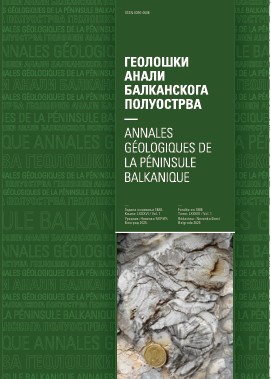Upper Miocene aragonite sediments of the Eastern Paratethys (Zheleznyi Rog section): whiting events or not?
Abstract
The upper Sarmatian and lower Maeotian unlithified aragonite sediments of the Zheleznyi Rog section (Taman Peninsula, Eastern Paratethys, Russia) were investigated by field observations and laboratory methods, including scanning electron microscopy, X-ray diffraction and isotope analyses. Aragonite sediments occur at separate intervals of the studied section, forming thin (millimeter-sized) interlayers with clays. These carbonate sediments consist almost entirely of crystals (individuals and twins) and aggregates of aragonite, ranging in size from 5 to 23 μm. It is assumed that the isotopic composition (δ13C = 5.7 and 5.3‰, δ18O = -2.4 and -2.8‰ for upper Sarmatian and lower Maeotian aragonites, respectively) reflects the sedimentation conditions, characterized by reduced basin salinity, increased surface water bioproductivity, and periods of aridization. Abiotic precipitation of these aragonites most likely occurred due to the action of triggering mechanisms, which could include planktonic algae blooms (e.g. diatoms). The obtained results do not contradict the hypothesis that the studied aragonites may be considered as sediments of whiting phenomenon.
Copyright (c) 2024 Geološki anali Balkanskoga poluostrva

This work is licensed under a Creative Commons Attribution 4.0 International License.










